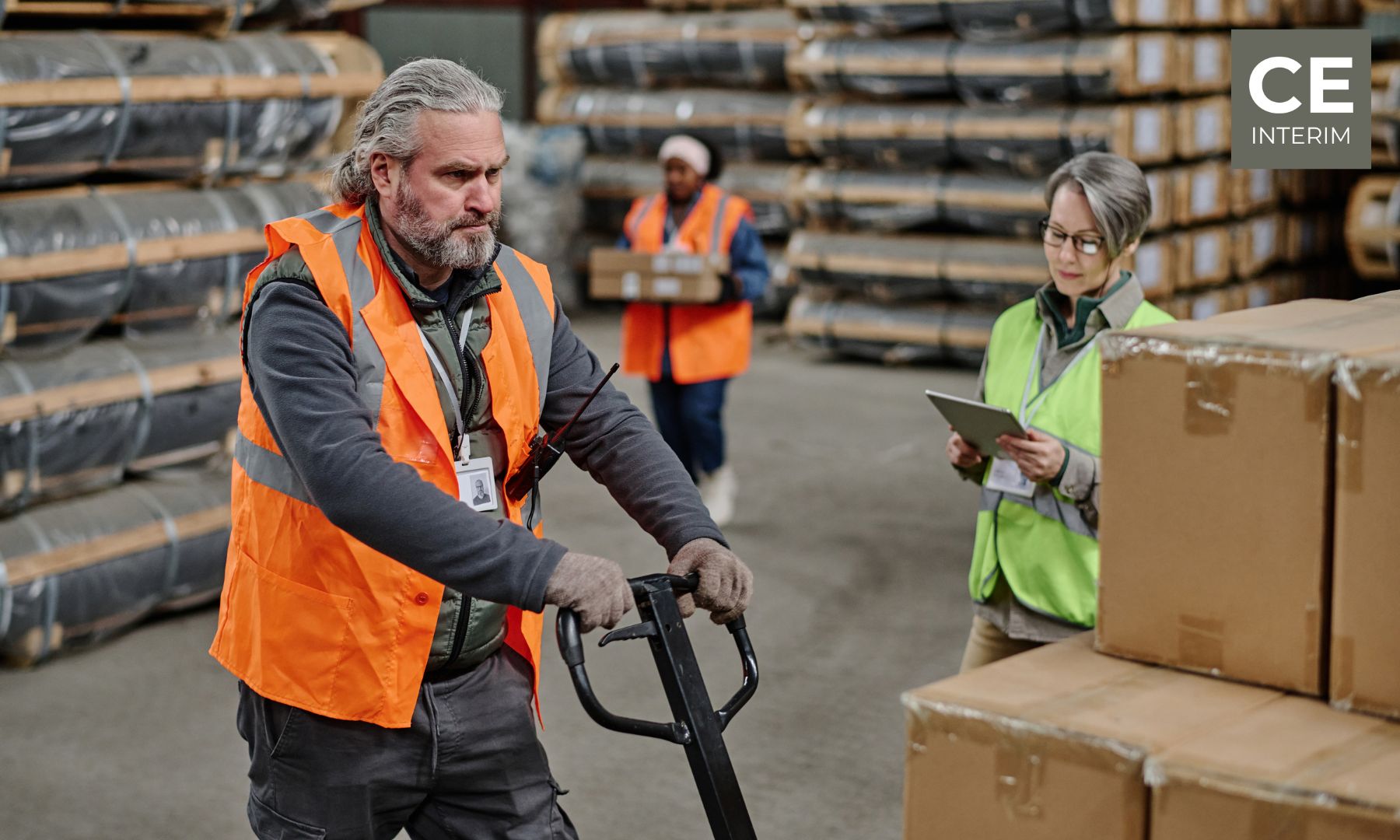Not enough time to read the full article? Listen to the summary in 2 minutes.
Relocating a factory can feel like an epic quest. The process demands extensive effort, time, and resources. It’s not just about moving machines from one location to another; it involves meticulous planning, coordination, and an eye for detail. For manufacturing managers, supply chain professionals, and business leaders, understanding the key Factory Relocation Challenges and overcoming them is vital for a seamless transition.
In this blog post, we’ll explore the major hurdles you’ll face during factory relocation and provide actionable solutions to handle them effectively. Let’s ensure your move is smooth, swift, and successful.
Why Factory Relocation is a Big Deal
Factory relocation involves moving production facilities from one location to another, often aiming to reduce costs, improve operational efficiency, or access better resources such as skilled labor or raw materials.
This complex process can include dismantling equipment, transporting machinery, and setting up operations in a new site. Each phase of the relocation requires meticulous planning and coordination to ensure that all components are moved safely and efficiently.
While the reasons for relocation may vary, they are usually driven by market conditions, regulatory environments, or logistical advantages. Companies may relocate to areas with lower labor costs, favorable tax conditions, or better access to key resources.
In some cases, relocating closer to customers can also shorten supply chains and improve delivery times. Despite these potential advantages, the challenges often remain consistent. These can include logistical complexities, potential downtime, and the need to ensure minimal disruption to production schedules. Every piece of equipment must be carefully dismantled, transported, and reassembled, which can be a time-consuming and delicate operation.
Moreover, there is a significant amount of planning involved in ensuring that employees are either relocated or replaced without causing a gap in the workforce. This often requires comprehensive training programs to get new or relocated employees up to speed with the existing processes.
Relocating a factory can bring substantial benefits, such as the following:
- Cost Savings: Lower operational expenses through reduced labor costs, favorable tax conditions, and more efficient resource management.
- Improved Efficiency: Streamlined operations and production processes with state-of-the-art facilities and optimized layouts.
- Access to Skilled Labor: Availability of a skilled workforce that can enhance productivity and innovation.
- Better Resource Availability: Proximity to essential raw materials or suppliers, reducing logistic complexities and costs.
- Market Expansion: New opportunities for growth by being closer to key markets, improving customer service and delivery times.
- Regulatory Advantages: Benefits from operating in regions with favorable regulatory environments and incentives.
As beneficial as it sounds, manufacturing plant relocation projects also brings forth significant challenges that can disrupt operations if not managed properly. Let’s discuss the challenges that companies face when relocating a factory.
7 Key Challenges in Factory Relocation and Their Solutions
Here are the seven major challenges that businesses come across when embarking on a manufacturing plant relocation journey. Don’t worry just yet, as we have also provided appropriate solutions to overcome each challenge:
1) Insufficient Planning and Preparation
One of the most common pitfalls in factory relocation is inadequate planning. Companies often underestimate the complexity of the move, leading to unforeseen obstacles and mishaps.
Solution:
- Allow Sufficient Time: Allocate ample time for planning.
- Set Clear Objectives: Define milestones and goals.
- Thorough Site Analysis: Conduct detailed analysis for site selection.
- Stakeholder Involvement: Engage stakeholders and employees early.
- Expert Assistance: Consider hiring an interim manager experienced in relocations.
2) Financial Limitations and Excessive Expenditure
Relocation requires a significant investment, covering everything from acquiring new facilities to post-relocation setup. Hidden costs can also arise, straining budgets.
Solution:
- Detailed Budgeting: Create a comprehensive budget, including contingency funds.
- Expense Monitoring: Regularly review financial status and adjust as needed.
- Explore Financing Options: Look for government tax incentives and subsidies.
- Interim Manager Support: A skilled interim manager can help minimize costs.
3) Downtime and Operational Disruption
Downtime is almost inevitable during relocation. Prolonged disruptions can lead to high lead times, dissatisfied customers, and a damaged reputation.
Solution:
- Transition Plan: Develop a detailed transition plan to minimize downtime.
- Phased Relocation: Implement a phased approach to reduce operational impact.
- Inventory Buffers: Maintain inventory buffers and secure alternative suppliers.
- Checklist Adherence: Follow a factory relocation checklist rigorously.
- Interim Manager Expertise: Leverage interim managers to minimize disruptions.
4) Supply Chain Breakdowns
Relocating to a distant location can disrupt supply chains, leading to delays in receiving materials and increased transportation costs.
Solution:
- Strategic Site Selection: Choose a site that enhances supply chain efficiency.
- Optimize Logistics: Carefully plan and optimize supply chain routes.
- Local Supplier Relationships: Build strong relationships with local suppliers.
- Technology Integration: Use cutting-edge technology for supply chain management.
- Interim Manager Guidance: Work with an expert interim manager for supply chain optimizations.
5) Workforce Management Issues
Relocation significantly impacts the workforce, posing challenges like retaining employees, recruiting new talent, and training staff.
Solution:
- Transparent Communication: Maintain open communication with employees.
- Relocation Assistance: Offer relocation packages, incentives, and support.
- Training Programs: Provide comprehensive training for all employees.
- Employee Feedback: Collect and act on employee feedback to improve satisfaction.
- Interim Manager Assistance: Employ an experienced interim manager for workforce management.
6) Technological Integration and Quality Control
New technology and equipment can create compatibility issues, leading to delays and dissatisfaction among employees.
Solution:
- Training Modules: Introduce training modules for technology integration.
- Incremental Integration: Follow a step-by-step approach for tech integration.
- Support Systems: Provide support for any tech-related issues.
- Quality Assurance: Maintain strict quality control throughout the process.
- Interim Manager Expertise: Connect with interim managers for tech integration and quality control.
7) Regulatory and Cultural Problems
Relocating a factory can bring regulatory hurdles and cultural challenges, impacting operations and community relations.
Solution:
- Favorable Site Selection: Choose a location with a favorable business environment.
- Regulatory Compliance: Adhere to local environmental, health, and safety standards.
- Community Engagement: Engage with the local community respectfully.
- Community Initiatives: Participate in community development projects.
- Local Expertise: Hire an interim manager with local knowledge.
How Interim Managers Can Help Overcome Factory Relocation Challenges
Interim managers are experts in navigating crises and ensuring successful factory relocations. They can identify challenges early, develop effective strategies, and execute plans seamlessly.
With their extensive experience and specialized knowledge, interim managers are equipped to handle the complexities of relocation, from logistical hurdles to personnel adjustments.
From initial strategy development to post-relocation review, interim managers provide invaluable support. They conduct thorough assessments to understand the specific needs and potential risks associated with the move.
They help craft detailed relocation plans to ensure that all aspects, such as equipment transfer, workforce management, and timeline adherence, are meticulously addressed.
Throughout the relocation process, interim managers:
- Ensure minimal disruption
- Maintain productivity, and
- Help achieve operational excellence
Their ability to adapt to unforeseen issues and implement corrective actions swiftly keeps the transition smooth and efficient. After the move, they continue to monitor performance and make necessary adjustments, ensuring that the factory operates at its optimal capacity in the new location.
Final Word
Factory relocation presents numerous challenges. But with proper planning and expert assistance, you can overcome these obstacles. Hiring an interim manager with a proven track record offers a robust solution to ensure a smooth transition.
Don’t leave your factory relocation to chance. Trust in the expertise of interim managers to guide you through the process and secure a successful outcome. If you’re ready to make the move, we’re here to help.
For exceptional interim management solutions, look no further than CE Interim, your trusted partner in cross-cultural interim management.
Our experienced interim managers are adept at overseeing seamless transitions and ensuring optimal operational efficiency. Discover how our tailored interim management solutions can empower your business today.
Fill out our Contact Form, and our representatives will contact you shortly to discuss your factory relocation needs. We are committed to helping you unlock new growth opportunities for your business.





